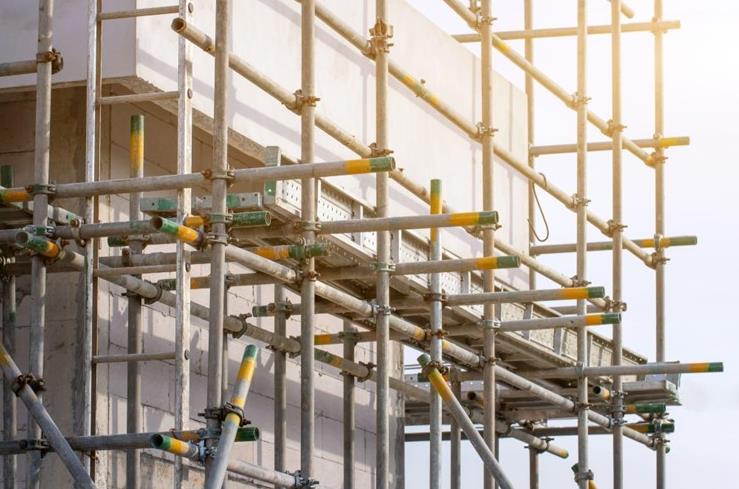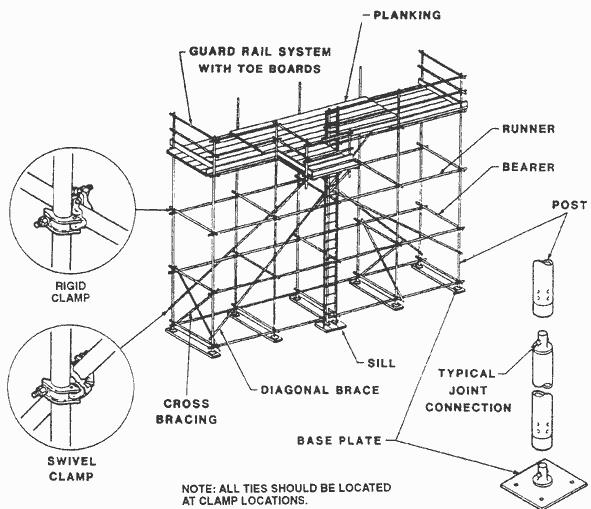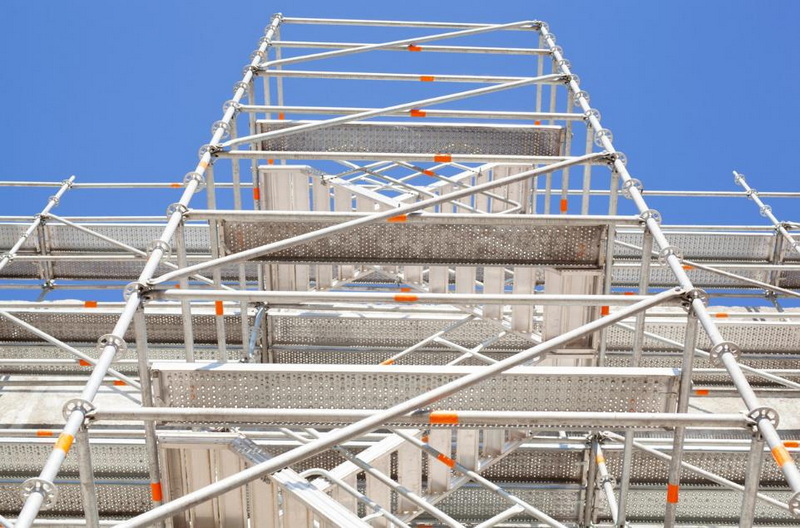Content Menu
● Understanding Scaffold Systems
>> Definition of Scaffold Systems
>> Types of Scaffold Systems
● Regulations Governing Scaffold Systems
>> OSHA Regulations
>> ANSI/ASSP Standards
>> Local Regulations
● Key Safety Standards for Scaffold Systems
>> Design and Construction Standards
>> Maintenance Standards
>> Training Requirements
● Common Hazards Associated with Scaffold Systems
● Best Practices for Scaffold Safety
● Real-Life Case Studies
>> Case Study 1: The Importance of Compliance
>> Case Study 2: Effective Training Saves Lives
● Conclusion
● FAQ
>> 1. What are the main regulations governing scaffold systems?
>> 2. How often should scaffolds be inspected?
>> 3. What is the required load capacity for scaffolds?
>> 4. What type of training is required for workers using scaffolds?
>> 5. What are common hazards associated with scaffold use?
Scaffolding systems are essential in the construction industry, providing temporary structures that support workers and materials during building projects. However, the safety of these systems is paramount, necessitating strict regulations and standards to prevent accidents and ensure worker protection. This article explores the regulations and safety standards governing scaffold systems, detailing the requirements set forth by various authorities, including OSHA (Occupational Safety and Health Administration) and other relevant organizations.

Understanding Scaffold Systems
Definition of Scaffold Systems
A scaffold system is a temporary structure used to support a work crew and materials during construction or maintenance activities. They are designed to provide safe access to heights and support loads while ensuring the safety of workers.
Types of Scaffold Systems
1. Supported Scaffolds: These are platforms supported by rigid, load-bearing members such as poles or frames. They are the most common type of scaffold used in construction.
2. Suspended Scaffolds: These platforms are suspended from an overhead structure and can be raised or lowered. They are often used for tasks like window washing or maintenance on tall buildings.
3. Rolling Scaffolds: These are mobile scaffolds equipped with wheels for easy relocation. They are particularly useful in large construction sites where mobility is essential.
4. System Scaffolds: These use prefabricated components that can be assembled in various configurations, allowing for flexibility in design and use.
5. Frame Scaffolds: Consisting of a series of frames connected with cross braces, frame scaffolds are popular for their ease of assembly and stability.
Regulations Governing Scaffold Systems
OSHA Regulations
The Occupational Safety and Health Administration (OSHA) has established comprehensive regulations for scaffold systems to ensure worker safety. Key requirements include:
- Fall Protection: Workers on scaffolds over 10 feet high must be protected by guardrails or personal fall arrest systems. Guardrails should be installed between 38 inches and 45 inches in height, with midrails positioned at approximately half that height.
- Load Capacity: Scaffolds must be designed to support at least four times their maximum intended load. This includes the weight of workers, materials, and equipment.
- Inspection Requirements: Scaffolds must be inspected before each use, after any significant alterations, and every seven days to ensure their safety and stability.
- Training Requirements: OSHA mandates that employers provide training to workers who will be using scaffolds. This training should cover proper use, hazard recognition, and safety procedures.
ANSI/ASSP Standards
The ANSI/ASSP A10.8-2019 standard outlines safety requirements for scaffolding construction, operation, and use. This includes specifications for design, materials, and maintenance practices that ensure scaffold systems are both safe and effective.
Local Regulations
In addition to federal standards, many states have their own regulations regarding scaffold safety. For instance, some jurisdictions may require additional training for workers or more frequent inspections based on local conditions. Employers should always check local regulations to ensure compliance.

Key Safety Standards for Scaffold Systems
Design and Construction Standards
1. Load-Bearing Capacity: The design must account for weight distribution and material strength to prevent collapses. Engineers often conduct load calculations before constructing scaffolding systems to ensure they can handle expected loads.
2. Stability Requirements: Scaffolds must have a solid foundation on level ground capable of supporting their weight without shifting or settling. This may involve using base plates or mud sills to distribute weight evenly.
3. Bracing Systems: Proper bracing is essential to prevent swaying or collapse under load. Cross-bracing is commonly used to enhance stability.
4. Material Specifications: All materials used in scaffold construction must meet specific standards for strength and durability, such as those outlined in ASTM (American Society for Testing and Materials) standards.
Maintenance Standards
Regular maintenance is crucial for scaffold safety. This includes:
- Cleaning: Scaffolds should be cleaned after each job to remove debris that could cause slip hazards.
- Repairs: Any damaged components must be repaired or replaced immediately to maintain structural integrity.
- Weather Considerations: Scaffolds should be assessed after severe weather events (e.g., storms or high winds) to ensure they remain safe for use.
Training Requirements
Employers are responsible for providing training to all employees working on scaffolds. This training should cover:
- Proper assembly and disassembly procedures.
- Use of personal protective equipment (PPE).
- Recognition of hazards associated with scaffold use.
- Emergency procedures in case of an accident or equipment failure.
Common Hazards Associated with Scaffold Systems
Despite regulations, several hazards can arise when using scaffolds:
1. Falls from Height: The leading cause of injuries in scaffold-related accidents is falls from height due to inadequate fall protection measures or improper use of scaffolding systems.
2. Scaffold Collapse: Often due to improper assembly or overloading, scaffold collapses can result in serious injuries or fatalities.
3. Falling Objects: Tools or materials can fall from scaffolds if not secured properly, posing risks to workers below.
4. Electrocution Hazards: Scaffolding placed near power lines can lead to electrocution if proper precautions are not taken.
5. Slip Hazards: Wet or icy conditions can create slip hazards on scaffolding platforms if not addressed promptly.
Best Practices for Scaffold Safety
To mitigate risks associated with scaffold systems, consider the following best practices:
- Conduct Regular Inspections: Ensure scaffolds are inspected daily before use by a qualified person who understands the specific requirements for safe operation.
- Use Proper PPE: Workers should wear helmets, harnesses, non-slip footwear, and other appropriate gear as required by the job conditions.
- Implement Fall Protection Systems: Utilize guardrails and personal fall arrest systems effectively; ensure that all workers know how to use them properly.
- Secure Tools and Materials: Always secure tools and materials on scaffolds to prevent them from falling off during work operations.
- Maintain Clear Communication: Establish clear communication protocols among team members working on scaffolding projects to enhance safety awareness.
Real-Life Case Studies
Case Study 1: The Importance of Compliance
In a notable incident at a construction site in New York City, a worker fell from a height of 20 feet due to improper installation of guardrails on a scaffold system. The investigation revealed that the company had failed to comply with OSHA regulations regarding fall protection measures. As a result, the company faced significant fines and was required to implement new training programs for its employees.
Case Study 2: Effective Training Saves Lives
A construction company in California implemented a comprehensive training program after experiencing multiple near-miss incidents involving scaffold collapses due to overloading. The training emphasized load capacity limits and proper assembly techniques. Following this initiative, the company reported zero incidents related to scaffolding over a two-year period, demonstrating the effectiveness of proper training in enhancing workplace safety.
Conclusion
The importance of adhering to regulations and safety standards for scaffold systems cannot be overstated. By understanding the requirements set forth by OSHA and other regulatory bodies, employers can create a safer work environment that protects their workers from potential hazards associated with scaffold use. Continuous education on best practices combined with rigorous adherence to safety protocols will significantly reduce risks associated with scaffolding operations in the construction industry.

FAQ
1. What are the main regulations governing scaffold systems?
The primary regulations include OSHA standards which mandate fall protection measures, load capacity requirements, inspection protocols, and mandatory training for workers using scaffolds.
2. How often should scaffolds be inspected?
Scaffolds should be inspected before each use, after significant alterations, and at least every seven days by a qualified person familiar with scaffold safety requirements.
3. What is the required load capacity for scaffolds?
Scaffolds must be designed to support at least four times their maximum intended load as per OSHA regulations; this ensures they can safely handle the weight of workers and materials without risk of collapse.
4. What type of training is required for workers using scaffolds?
Workers must receive training on proper assembly/disassembly procedures, hazard recognition related to falls or equipment failure, safe use of personal protective equipment (PPE), and emergency response protocols in case of an accident.
5. What are common hazards associated with scaffold use?
Common hazards include falls from height due to inadequate fall protection measures; scaffold collapse from improper assembly or overloading; falling objects from unsecured tools; electrocution risks near power lines; and slip hazards caused by wet conditions on platforms.






















